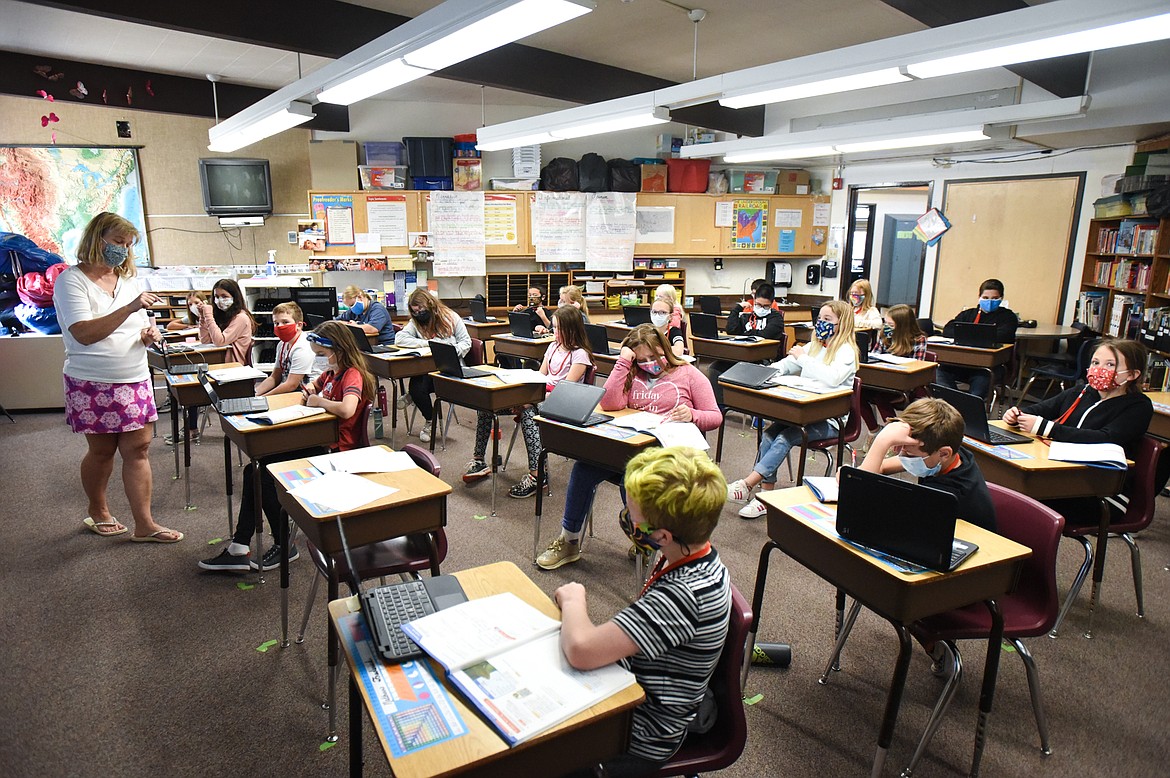Gianforte’s budget to boost new teacher pay
Teachers in Montana run roughly in the middle of the pack when it comes to average salaries across the country, according to education officials here.
But new teachers? In the Treasure State, rookies take home the smallest paychecks of those in all other states.
Thursday, education officials who represent schools and educators said Gov. Greg Gianforte’s budget with its $2.5 million to raise starting teacher pay will help bring up Montana teachers.
“It’s not the silver bullet,” said Dennis Parman, head of the Montana Rural Education Association. “There is no silver bullet … (But) in a global sense, we think it’s a good idea.”
Of course, there are also a couple of catches. The program is voluntary, and schools districts that want to take advantage of the money will have to pony up some of their own.
“It’s the skin-in-the-game philosophy,” Parman said.
The education leaders were pleased in general with Gov. Gianforte’s budget for K-12.
Public K-12 schools would receive $72 million more in general fund dollars for changes in an enrollment calculation and inflation for the biennium. Gianforte’s request for the 2023 biennium is $2.106 billion for schools; former Gov. Steve Bullock’s budget wasn’t far off at $2.019 billion.
Lance Melton, executive director of the Montana School Boards Association, said he’s pleased the governor’s proposed budget includes annual inflation adjustments, a commitment the legislature adopted after a court case more than a decade ago: “It’s very heartening, and it’s something that we’re grateful for.”
As for the incentive for teachers, Melton said Montana has worked hard to raise the average salary of its teachers. In the last 15 years or so, he said teachers moved from being last in the nation to 27.
“But the traditional salary schedule is such that we didn’t make comparable headway on beginning teacher pay, which is still 50th,” Melton said.
Education Week put the average public school teacher salary in Montana at $54,034 in 2018-19. Parman said one estimate of average entry level pay was $27,000, although he also noted starting pay can vary widely in Montana.
In July, a Houston Chronicle analysis of starting teacher pay in the U.S. counted the average in Montana at $31,418, citing National Education Association data. That starting salary was the lowest in the U.S., according to worldpopulationreview.com.
Melton and Parman explained the way the $2.5 million would work. The money is billed as an incentive, but it’s not like a signing bonus.
Rather, it would allow a district to add pay to a teacher’s salary. A formula sets the minimum salary for new teachers in each district, and if the district wants to use the program, it pitches in the rest of the money necessary to hit the required threshold.
For example, if a new teacher would have been paid $29,000 and could be paid $34,000 based on the formula, the state would kick in $3,400, and the district would need to commit to paying the remaining $1,600.
“We think it’ll give our members some resources, and if they choose to follow through on it, it will raise base teacher pay and get us to a more competitive edge for the next generation of teachers coming in,” Melton said.
The state money is reserved for new teachers in their first, second or third year of teaching, Melton said. And Parman said it helps Montana be more competitive.
“He (Gianforte) wanted to get more money in the hands of teachers, and this bill does that. Not all teachers, but some teachers,” Parman said.
If the deal makes it through the current legislative session as educators expect, it won’t just be between lawmakers and school districts. Amanda Curtis, president of the Montana Federation of Public Employees, said the money that goes to school districts will pay for salaries that have been bargained with union members of each district.
“It does keep the power in local control, and part of that local control is in the union members’ hands,” Curtis said. So she said it isn’t a cookie cutter fix to low pay for new teachers.
“It’ll make everyone collaborate to solve this problem,” Curtis said.
Keila Szpaller is deputy editor of the Daily Montanan and covers education.


